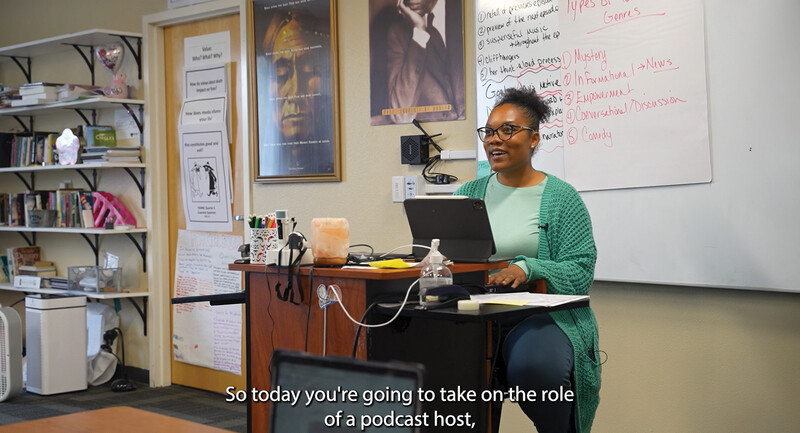High School Might Be the Place for PreK
Amanda M. Stevens
Starting young children off with a solid education and preparing older students for career options are more connected than one might think. My school district in Berkeley County, W.V., found an important link between them, and it all started with a need for classroom space.
West Virginia ranks among the top providers in the nation for prekindergarten programs, but the state's shift to a full-day, five-day-a-week program and increasing enrollment led to a lack of space for school districts like mine. Our preK program leads inquired about empty classrooms at local high schools.
While high school administrators approached the change with some trepidation, they quickly learned the benefits of having small children right down the hall, especially for the experiential learning of our career and technical education, or CTE, programs. As a former primary school principal and the current coordinator of preK staff development, I watched our preK programs, which serve over 1,000 students, expand into three of the four district high schools.
Many children face achievement gaps before they even start school. According to a 2016 report from the National Institute for Early Education Research, children in poverty can be as much as a year behind developmentally when they enter kindergarten, a gap that grows and can negatively affect graduation rates, college attendance, and adult income.
At the other end of the spectrum, while the national high school graduation rate—at 85 percent—is higher than it's ever been, for some non–college-bound students, CTE can boost high school completion and future career success.
Skills for the Future
Our biggest indicator of success has been the large number of students and teachers who actively seek out opportunities to collaborate with the preK class. PreK teachers estimate more than half the student body at each high school spends time in their classes, including about 100 high schoolers in CTE.
The home economics class collaborates with our young learners to create food related to preK lessons, such as making "sleeping bear" sandwiches during the week that preschoolers studied hibernation and migration. In one creative writing class, older students wrote children's books for preK students to illustrate. The shop class shows preK students how to use tools and create simple projects.
For students who are considering a career in education, collaborating with preK teachers to plan and implement lessons provides valuable experience long before students take their first education course.
In one of our high schools, special needs students collaborate with the preK classes to focus on life skills. Every morning, students with disabilities serve breakfast and assist with teeth-brushing.
Special events throughout the year also join the preK classes with high schoolers. The band and choir provide musical entertainment. The STEAM Academy regularly invites the preK students to observe their activities, including the annual Pumpkin Drop. At Halloween, during the preK costume parade, football players served as escorts for the students and carried their treats.
One unforeseen effect was the influence preK students have on the high school students' behavior. As soon as preK students enter the hallways, administrators see a marked decrease in inappropriate language and actions. One assistant principal recounted a time when a student quickly apologized for a profanity when he saw the younger students. The life skills students gain not only transfer to many future careers; they also build character.
Making It Work
A district that wants to implement a similar program should start by looking at options for space and the state's requirements for CTE credit. How might this type of program benefit both groups of students? Then, provide time for preK staff and high school departments to plan together. In Berkeley County, monthly school-based meetings spark collaboration as teachers share what is working and troubleshoot what is not.
Finally, put well-articulated procedures in place for daily routines where preK students interact with high schoolers. In our district, the bathrooms and cafeterias are areas where problems with inappropriate actions and language most often occur. Clear expectations about conduct around young children can mitigate issues.








